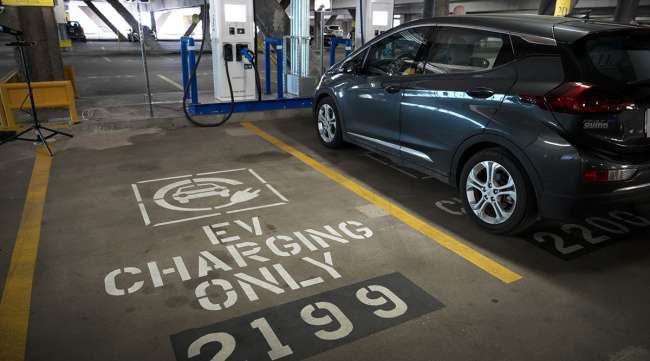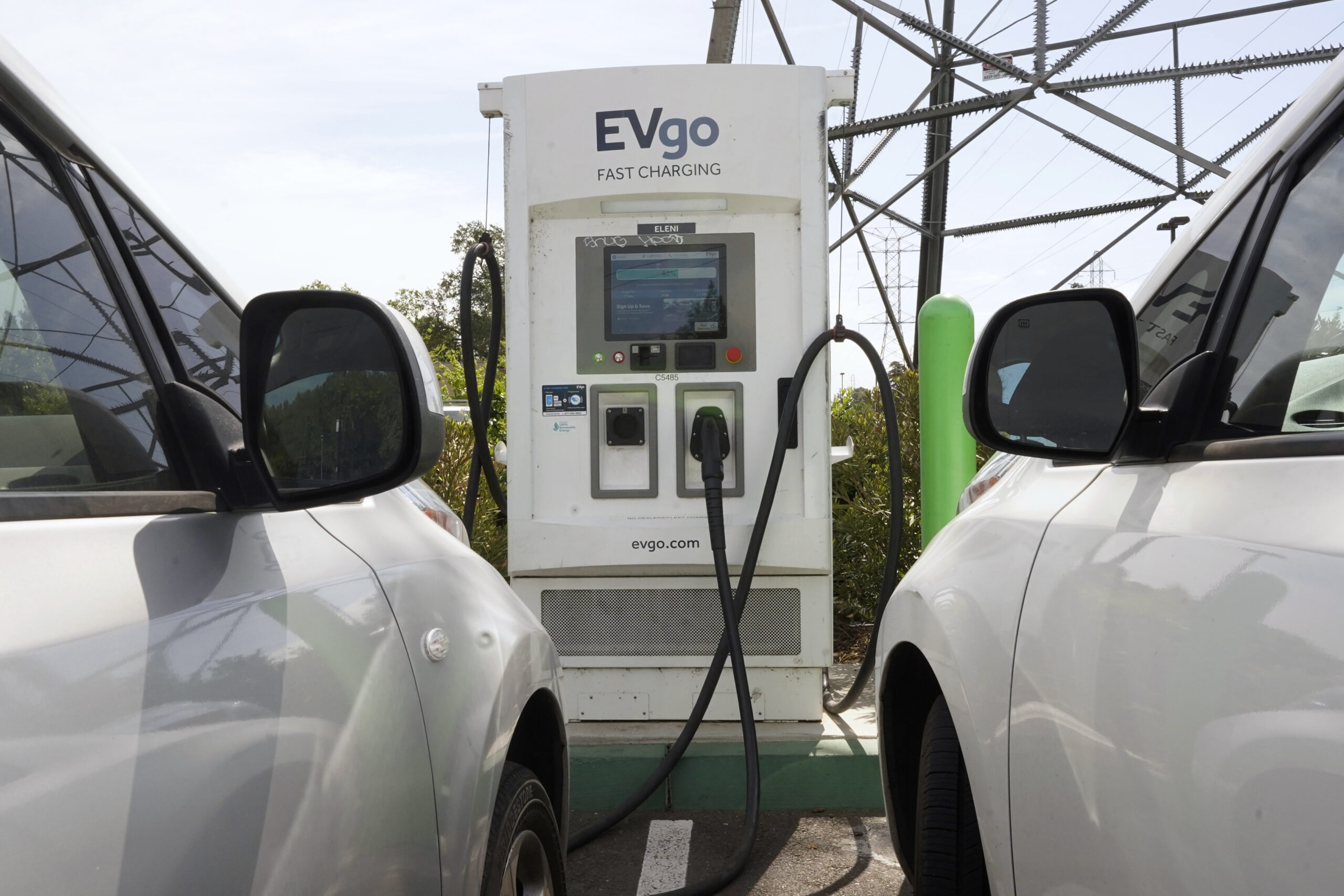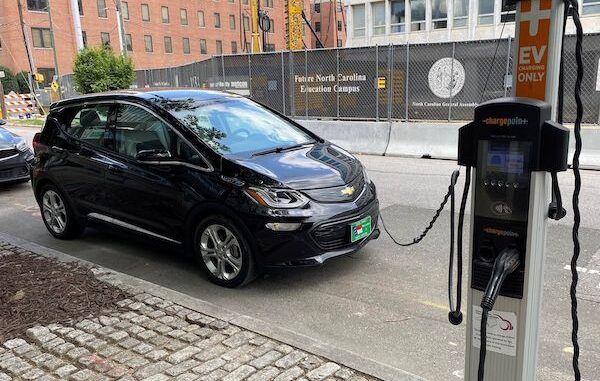Everything You Should Know Before You Decide to Buy EV Charging news
Wiki Article
Leading EV Charging News: Trick Updates on Framework and Technology

Recent Developments in Fast-Charging Innovation

Additionally, advancements in battery innovation, including enhanced thermal monitoring systems and higher energy thickness batteries, enhance fast-charging abilities. These growths reduce the danger of battery destruction during fast charging, making certain long life and performance for EV owners.
Furthermore, the combination of clever charging services is improving user experience, allowing real-time surveillance and vibrant pricing models. EV Charging news. This versatility enables vehicle drivers to enhance billing times and costs based on grid demand
As automakers remain to purchase fast-charging networks, the partnership in between sector stakeholders is crucial. Partnerships between charging station providers and auto manufacturers are leading the means for extensive coverage, ultimately fostering a much more durable EV environment. These innovations are crucial in sustaining the change to lasting transportation.
Federal Government Initiatives for Billing Development
Government initiatives play a crucial role in the growth of electric automobile (EV) charging infrastructure, helping with the transition to sustainable transport. Various government and state programs are being implemented to boost billing availability, minimize the financial worry on consumers, and promote the adoption of electrical automobiles.Notably, the united state government has allocated substantial financing through the Framework Financial Investment and Jobs Act, which earmarks $7.5 billion for EV charging network development across the country. This funding is aimed at releasing countless new billing stations, specifically in underserved areas, thereby resolving variety anxiety amongst prospective EV buyers.
In addition, various states are establishing regulations to streamline the allowing process for charging terminal installations, which is crucial for speeding up deployment. Rewards such as tax credit scores and refunds for both customers and companies are additionally being introduced to urge the installation of charging facilities.
Furthermore, public-private collaborations are significantly ending up being an emphasis, leveraging personal financial investment to complement federal government funding. These efforts emphasize a collaborative method crucial for building a reliable and comprehensive EV charging network, eventually adding to a greener and more sustainable future.
Ingenious Battery Solutions Enhancing Performance
Reinventing the landscape of electrical lorry (EV) technology, ingenious battery options are significantly enhancing efficiency and performance. Breakthroughs in battery chemistry, specifically with lithium-sulfur and solid-state batteries, are resulting in raised power thickness, which allows for longer varieties and faster billing times. These new battery types have the potential to outperform conventional lithium-ion batteries by using greater capabilities while minimizing weight, consequently improving general lorry performance.In addition, growths in battery administration systems (BMS) are optimizing energy usage and extending battery life-span. Smart formulas keep track of battery health and wellness and performance, enabling real-time adjustments to billing and releasing procedures. This not only boosts the effectiveness of the battery yet additionally makes certain an extra sustainable and reputable power source for EVs.
Furthermore, the assimilation of reusing innovations is dealing with the ecological influence of battery manufacturing and disposal. Advancements in second-life applications for EV batteries are facilitating their usage in energy storage systems, adding to a circular economy.
As these cutting-edge battery solutions remain to advance, they assure to change the EV market, making electric cars more available and appealing to a more comprehensive target market while supporting global sustainability objectives.

Collaboration Between Automakers and Charging Networks
Acknowledging the crucial demand for a durable billing facilities, car manufacturers are significantly teaming up with billing network service providers to improve the EV ownership experience (EV Charging news). These partnerships aim to create a smooth billing ecological community that profits customers and supports the shift to electric vehiclesSignificant auto brand names are joining forces with well established billing networks to broaden their charging terminal insurance coverage, making certain vehicle drivers have access to dependable and convenient billing choices. For example, partnerships with networks like ChargePoint and Electrify America permit car manufacturers to integrate billing options directly right into their automobiles' navigation systems, guiding individuals to the nearby stations and offering real-time accessibility updates.
Additionally, these collaborations usually lead to the growth of fast-charging innovations that significantly decrease the moment needed to reenergize an EV. By pooling sources and knowledge, car manufacturers and charging networks can introduce quicker, creating options that meet the growing need for electric wheelchair.
Additionally, joint efforts might likewise lead to more standard billing protocols, which can ease customer confusion and advertise wider EV fostering. Overall, these tactical partnerships are pivotal in building a user-friendly and efficient charging framework that meets the needs visit this site of a broadening electrical lorry market.
Challenges Encountering EV Billing Framework
As the electric automobile market proceeds to expand, several difficulties are surfacing that hinder the development of a detailed billing framework. Among the key barriers is the not enough variety of billing terminals, specifically in country and underserved urban locations. This gap creates range stress and anxiety amongst possible EV customers, deterring them from making the switch.Additionally, the lack of standardization accountable technology complicates the infrastructure landscape. Variants in plug kinds and charging speeds can create confusion for users and raise functional intricacies for billing network operators. Additionally, the combination of billing stations right into existing electric grids presents significant difficulties. Numerous areas encounter ability constraints, needing substantial investments in grid upgrades to suit boosted demand.
Another pressing issue is the high cost related to the setup and upkeep of charging terminals, which can be a barrier for both public entities and private services. Regulatory obstacles and zoning restrictions can delay the release of billing framework, hampering progression in expanding crucial services. Attending to these challenges will be critical for fostering a durable EV ecosystem that supports the change to sustainable transportation.
Conclusion
Finally, the recurring innovations in EV charging technology, supported by significant government efforts and ingenious battery options, are critical for the expansion and Click This Link efficiency of electric vehicle infrastructure. Collaborations between automakers and charging suppliers better enhance terminal insurance coverage, resolving the expanding need for obtainable billing choices. Regardless of obstacles that linger within the EV billing landscape, these advancements symbolize a positive trajectory towards a more efficient and sustainable electric lorry ecological community.Technologies in billing facilities have led to the growth of ultra-fast battery chargers qualified of providing up to blog 350 kW of power, significantly reducing billing times. Variations in plug types and billing speeds can create complication for customers and raise functional complexities for billing network operators.In conclusion, the recurring improvements in EV charging modern technology, supported by considerable federal government initiatives and cutting-edge battery remedies, are vital for the growth and efficiency of electrical car framework. Partnerships in between car manufacturers and charging providers better improve terminal protection, resolving the growing need for available billing options. Regardless of difficulties that persist within the EV billing landscape, these developments symbolize a positive trajectory in the direction of a much more lasting and efficient electric car ecosystem.
Report this wiki page